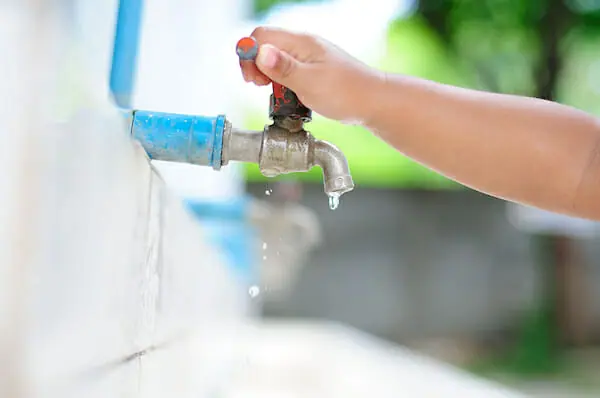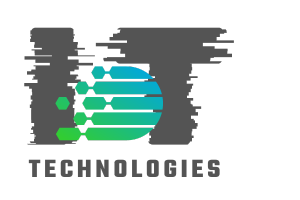
Water Shortage Solutions: Tackling the Crisis with Technology
Share
As the global population continues to rise, the demand for water is increasing at an alarming rate. Tech professionals and enthusiasts are uniquely positioned to devise water shortage solutions that can mitigate this crisis. The integration of innovative technologies into water management systems offers a promising avenue for effective water conservation and usage optimization. In this article, we delve into the various ways technology can provide answers to the pressing challenges of water scarcity.

Understanding the Water Crisis
Before exploring water shortage solutions, it's essential to understand the magnitude of the water crisis. According to the World Health Organization, one in three people globally does not have access to safe drinking water. This shortage is exacerbated by climate change, pollution, and inefficient water management practices. Conserving water is no longer an option, but a necessity, and technology can play a pivotal role in this transition.
Smart Water Management Systems
Smart water management systems utilize the Internet of Things (IoT) to monitor and optimize water usage. These systems can detect leaks in real-time, ensuring that water wastage is minimized. By employing sensors and data analytics, municipalities and organizations can make data-driven decisions to improve water distribution. Learn more about the importance of water conservation and how IoT can revolutionize water management.
IoT Sensors and Real-Time Monitoring
IoT sensors are at the heart of smart water management. These sensors provide real-time data on water flow, pressure, and quality, allowing for instant detection of anomalies such as leaks or contamination. This technology not only helps in conserving water but also ensures that the water supplied is safe and clean for consumption.
Data Analytics for Water Usage Optimization
Data analytics play a crucial role in optimizing water usage. By analyzing consumption patterns, tech professionals can identify areas where water usage can be reduced without impacting daily activities. Predictive analytics can also forecast future water needs, enabling proactive water management strategies.
Water Recycling and Reuse
Recycling and reusing water is another effective solution to address water shortages. Technologies such as membrane filtration, UV purification, and advanced oxidation processes can treat wastewater to make it reusable. Explore water reuse and recycling techniques to understand how treated wastewater can be a sustainable water source.
Membrane Filtration and UV Purification
Membrane filtration removes impurities from wastewater by forcing it through a porous membrane. UV purification uses ultraviolet light to kill bacteria and viruses in the water, making it safe for reuse. These technologies are vital in industries and municipalities where large volumes of wastewater are generated daily.
Advanced Oxidation Processes
Advanced oxidation processes (AOPs) use chemical reactions to remove organic and inorganic contaminants from water. AOPs are highly effective in treating industrial wastewater, ensuring that harmful pollutants do not enter the environment.
Urban Water Conservation Techniques
Urban areas are particularly vulnerable to water shortages due to their high population density. Implementing urban water conservation techniques can significantly reduce water usage. Technologies such as rainwater harvesting, smart irrigation, and water-efficient appliances are essential components of urban water management. Discover urban water conservation techniques that can be applied in cities to reduce water waste.
Rainwater Harvesting and Smart Irrigation
Rainwater harvesting involves collecting rainwater from rooftops and storing it for later use. This method can reduce reliance on municipal water supplies. Smart irrigation systems use weather data and soil moisture sensors to optimize watering schedules, ensuring that landscapes receive the right amount of water at the right time.
Water-Efficient Appliances
Investing in water-efficient appliances can lead to significant reductions in water usage in homes and businesses. Appliances such as low-flow toilets, showerheads, and washing machines are designed to use less water without sacrificing performance.
By embracing these water shortage solutions, tech professionals can make a substantial impact on mitigating water scarcity. The integration of technology in water management not only conserves water but also ensures its sustainable use for future generations. For more tips on conserving water at home, visit this guide.
Conclusion
The water crisis is an urgent issue that demands immediate attention and action. By leveraging technology, we can develop innovative water shortage solutions that address the root causes of the crisis. From smart water management systems to water recycling and urban conservation techniques, technology offers endless possibilities for sustainable water use. As tech professionals and enthusiasts, we have the power to drive change and create a future where water scarcity is no longer a threat.

FAQs
What role does technology play in solving water shortages?
Technology plays a crucial role in solving water shortages by providing tools for efficient water management, recycling, and conservation. Innovations like IoT sensors, data analytics, and advanced filtration systems help monitor and optimize water usage, reducing waste and ensuring sustainable water supply.
How can urban areas manage water scarcity effectively?
Urban areas can manage water scarcity by implementing water conservation techniques such as rainwater harvesting, smart irrigation, and using water-efficient appliances. These methods reduce water consumption and dependency on municipal supplies, making cities more resilient to water shortages.
Why is water recycling important?
Water recycling is important because it provides a sustainable source of water by treating and reusing wastewater. This process reduces the demand for freshwater resources, lowers environmental pollution, and supports industries and municipalities in managing their water needs efficiently.
